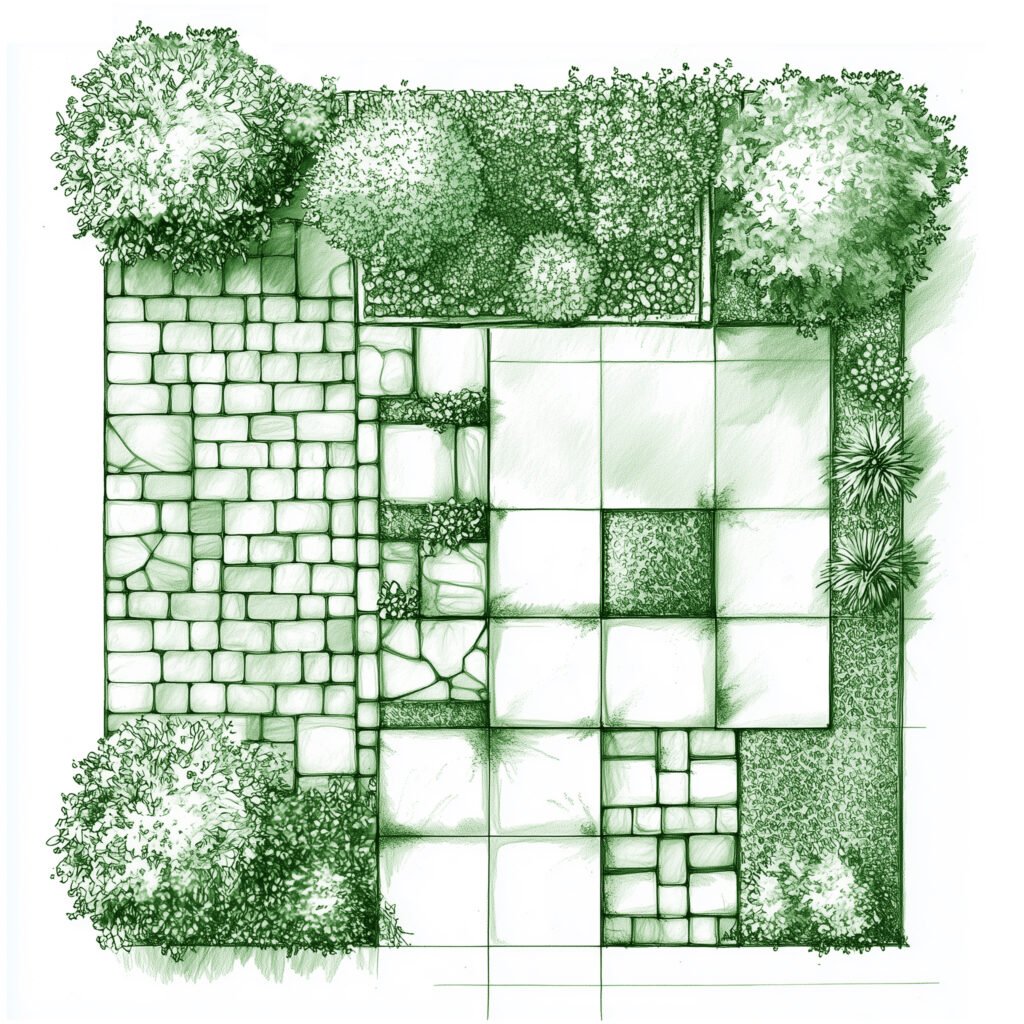
Paving defines both the structure and usability of outdoor spaces. This guide explores how different materials respond to factors like drainage, load-bearing, slip resistance, and weather exposure – helping you make a choice that’s both aesthetic and durable.
When it comes to creating outdoor spaces that truly feel finished, paving plays a bigger role than most people expect. It sets the tone underfoot. It guides movement. It helps define zones, create contrast, or tie together different materials like decking, fencing, and planting.
But choosing the right paving isn’t just about picking something you like the look of. It’s about making sure the material suits your space – visually, practically, and structurally.
The Main Types of Paving Materials In Ireland
Choosing the right paving material is not just about appearance – it’s about understanding how each type behaves under real-world conditions like water exposure, thermal expansion, and mechanical stress. Different materials have different structural demands, installation methods, and maintenance requirements. Selecting the right one for your project means balancing durability, performance, and the overall feeling you want the space to convey.
Here are the most common paving materials we work with and where they shine:
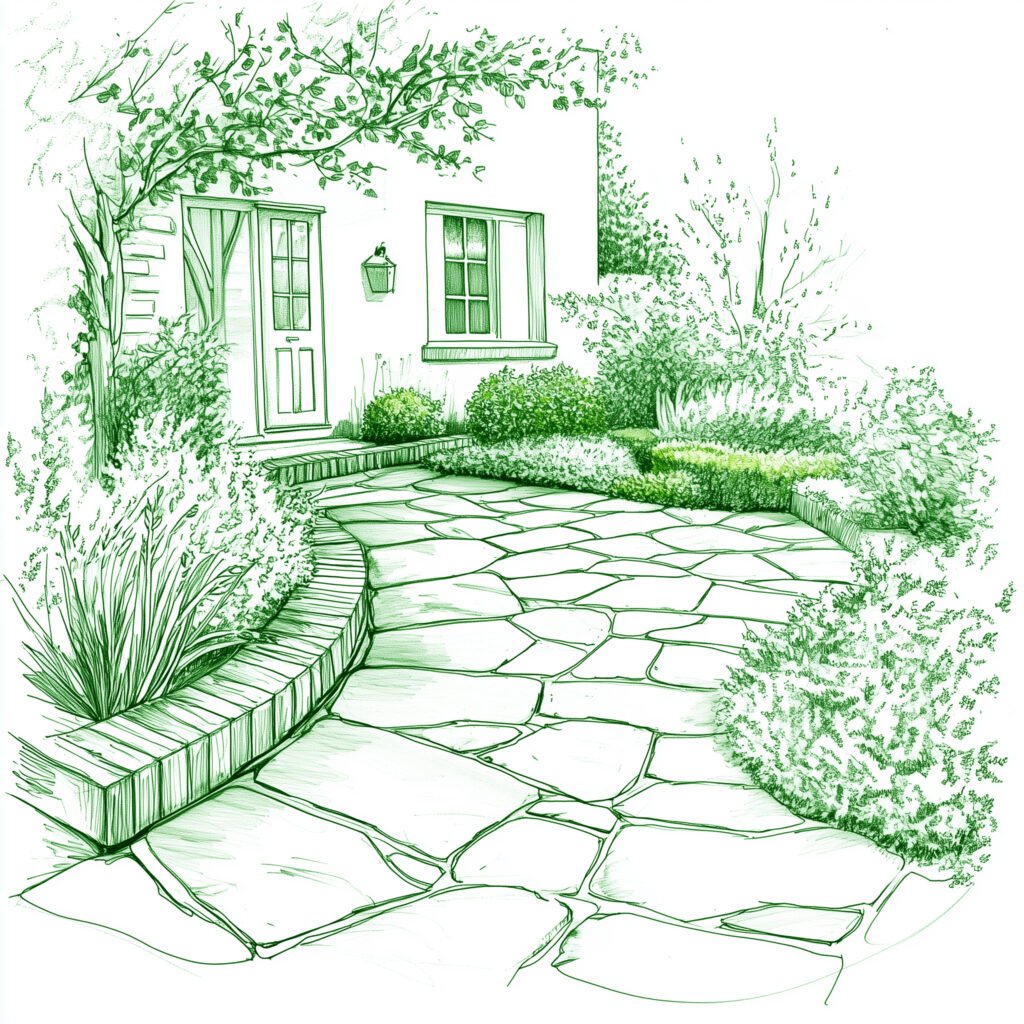
1. Natural Stone
Elegant, timeless, and full of variation, natural stone has been used for centuries to define outdoor spaces. Each slab is unique, with subtle differences in tone, veining, and surface texture that add depth and character to any project. No two installations are ever exactly alike – and that’s part of the charm.
Natural stone suits a wide range of styles, but it shines especially in classic gardens, country homes, or any landscape that benefits from a sense of softness and tradition. Its organic look pairs effortlessly with timber structures, lush planting, and heritage architecture.
However, stone needs care to keep looking its best. It typically requires sealing to protect against staining and moisture absorption, and occasional maintenance to prevent weathering or moss buildup, especially in shaded or damp areas. When properly maintained, though, natural stone weathers gracefully, developing a soft patina that enhances its beauty over time.
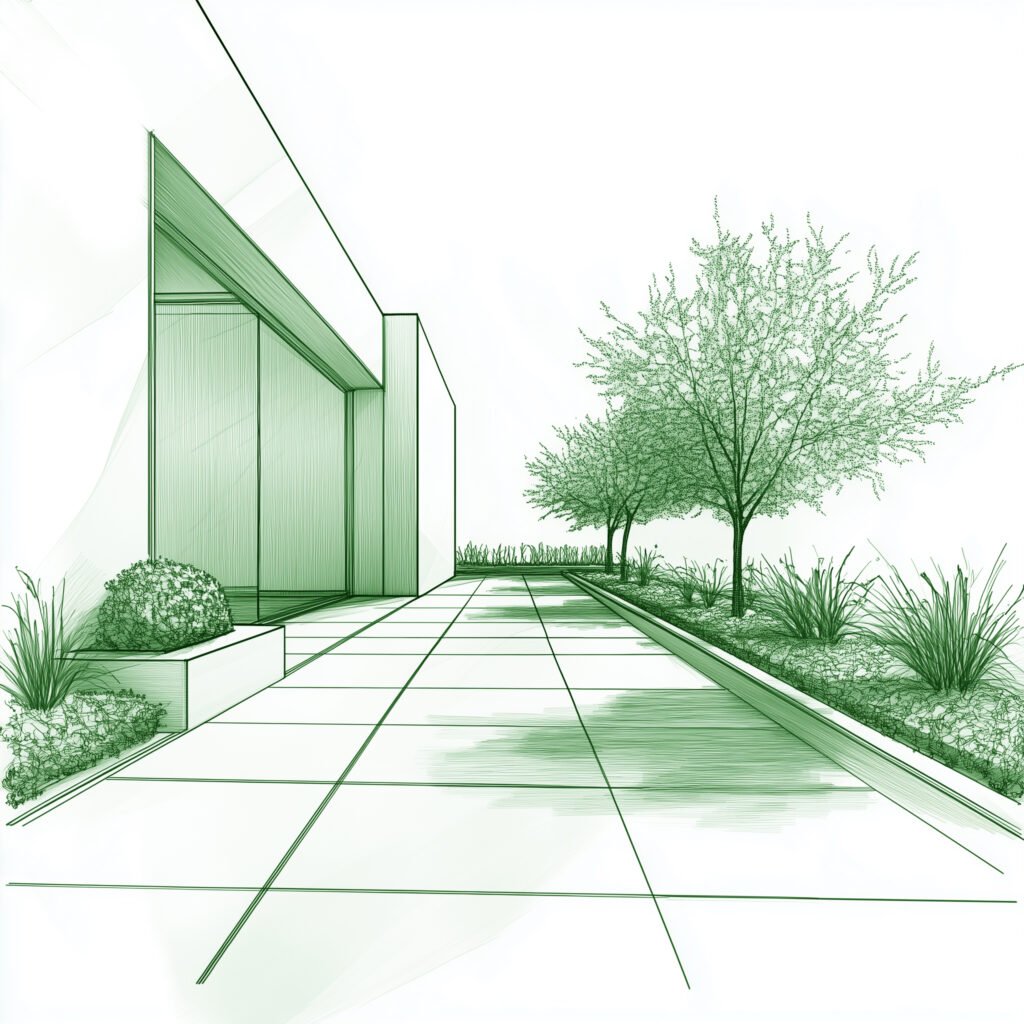
2. Porcelain
Porcelain has quickly become a favourite for Irish patios thanks to its exceptional durability and versatility. Manufactured from refined clay and fired at high temperatures, it’s non-porous, slip-resistant, and virtually maintenance-free — perfect for the Irish climate.
Available in a wide range of colours and textures, porcelain can replicate natural stone, timber, or sleek concrete finishes, making it ideal for modern, structured gardens. Its consistent look and hard surface bring clarity and precision to outdoor spaces.
Proper installation is crucial: porcelain requires a stable, well-prepared sub-base, and for raised systems, aluminium frames are usually necessary to ensure long-term performance. When done right, it offers a clean, elegant surface that stays beautiful with minimal effort.
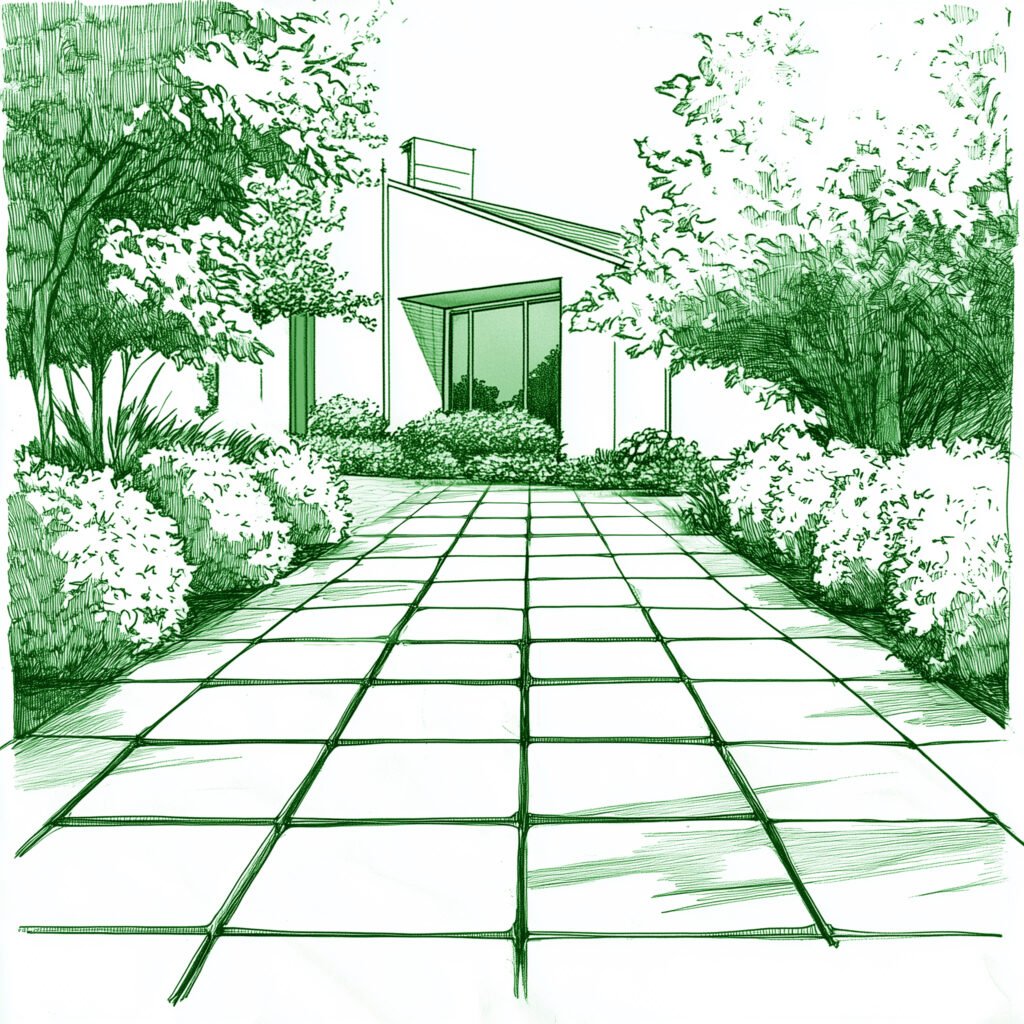
3. Concrete Pavers
Concrete pavers are one of the most versatile and cost-effective paving options available. Manufactured in a wide variety of shapes, sizes, and finishes, they lend themselves easily to both modern geometric layouts and more traditional designs.
They are generally easier and faster to install than natural stone, making them a popular choice for projects where budget and timing are important. Depending on the surface treatment — smooth, textured, or patterned — concrete pavers can either complement a clean, minimalist setting or blend into a more rustic, informal garden style.
Ideal for paths, patios, driveways, and utility areas, they provide good structural performance when installed correctly over a stable sub-base. Some variants also allow for permeable layouts, helping with drainage in areas prone to heavy rainfall.
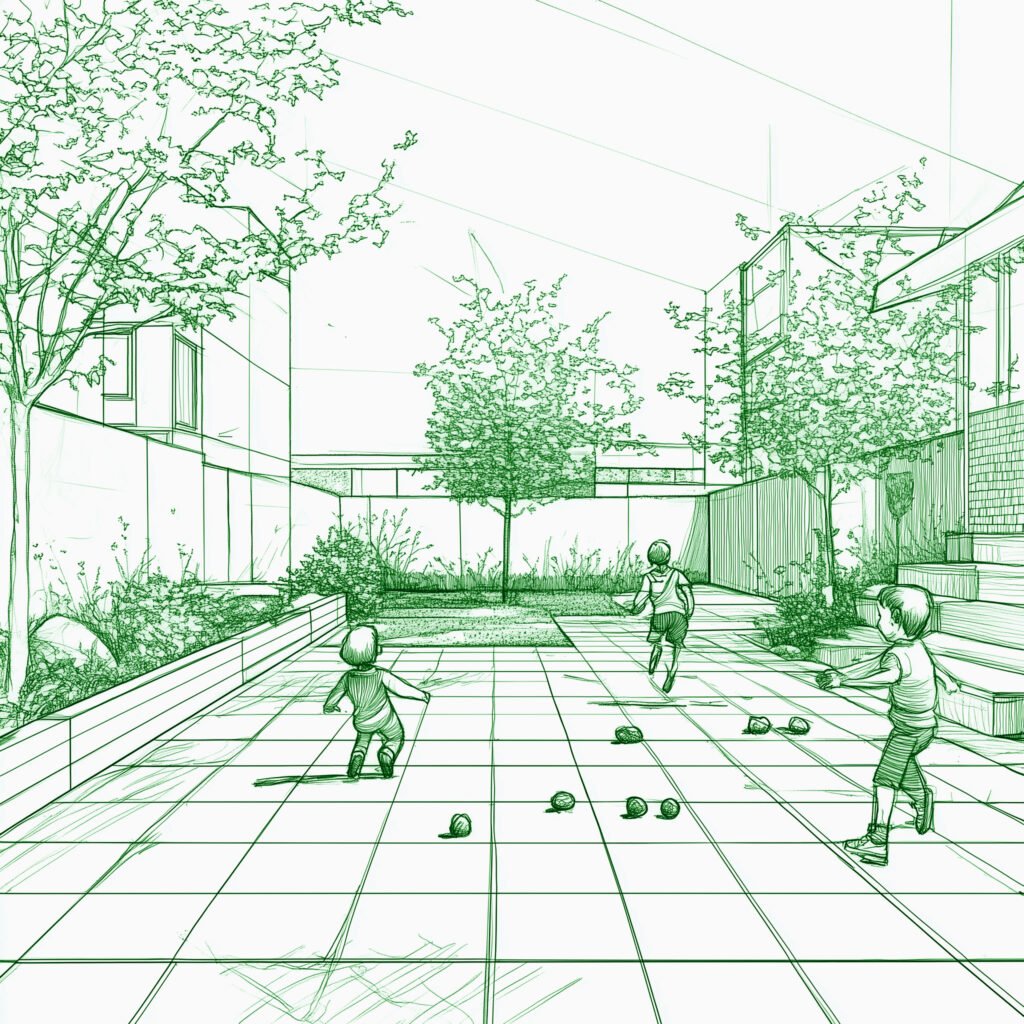
4. Composite Tiles
Composite tiles offer a smart, low-maintenance alternative for outdoor surfaces, combining wood fibres and recycled plastics into a durable, colour-stable material. Although less common than stone or porcelain, they are valued for their resistance to fading, ease of cleaning, and comfortable texture underfoot.
They are particularly effective in areas that act as transitions between decking and traditional paving, blending the warmth of timber aesthetics with the resilience of hard landscaping. Thanks to their slightly softer and slip-resistant surface, composite tiles are also an excellent choice for family spaces, including children’s play areas, where safety and comfort are priorities.
While they don’t offer the rich natural variation of stone, composite tiles excel in projects that favors uniformity, easy upkeep, and a contemporary, cohesive look across different parts of the garden.
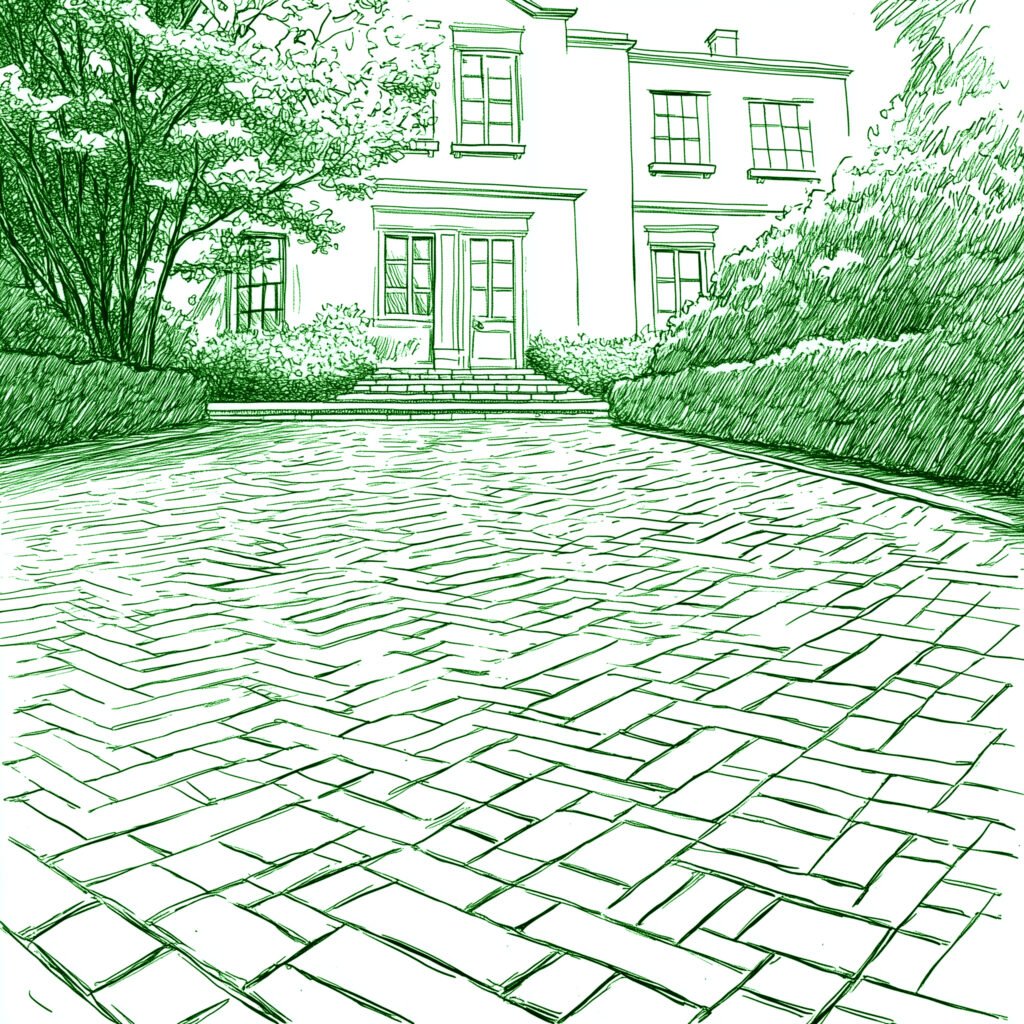
5. Brick / Clay Pavers
Brick and clay pavers bring a sense of timeless character and warmth that few materials can match. With their natural earthy tones and slight surface variations, they offer a textural richness perfect for traditional gardens, heritage properties, or rustic-style homes.
They lay beautifully in classic patterns like herringbone, basket weave, or stack bond, each adding movement and visual interest to paths, courtyards, or patios. Brick paving creates spaces that feel inviting, familiar, and lived-in – making them ideal where you want a garden to feel more intimate and grounded.
However, clay pavers require careful installation: a solid, well-compacted sub-base is essential for durability, and proper edge restraint is needed to prevent shifting over time. With the right preparation, though, they offer outstanding longevity and a surface that only gets better with age.
What to Consider (Beyond Looks)
You might fall in love with a texture or colour. That’s great – aesthetics matter. But the best paving choice is one that balances looks with:
- Drainage – how water flows or drains off the surface
- Stability – especially for raised patios or areas near structures
- Slip resistance – especially in shaded, north-facing, or wet areas
- Maintenance – sealing, cleaning, weed control
At Timbermasters, we always start with the site. We assess slope, soil, and layout before recommending materials. Because what works in a sunny, sheltered city garden might not hold up in a windy, boggy rural one.

Paving as Design Language
We think of paving like flooring – not just something you walk on, but something that defines how a space feels.
- Large-format tiles feel modern, sleek, and open up a space visually
- Smaller tiles or bricks feel more traditional, rhythmic, and detailed
- Mixed finishes (smooth and textured) can create subtle transitions between zones
- Pattern changes how people move – a diagonal layout draws the eye, a border frames a dining area
We don’t just install paving – we design layouts that work with the home, the garden, and the homeowner’s routine. Sometimes, that means running porcelain tiles from inside the house straight out to the garden, creating seamless flow. Other times, it means creating contrast – stone edges framing soft gravel paths.
Paving isn’t just surface. It’s structure. It’s story. Sometimes even statement!
What Makes Timbermasters Different
We don’t install tiles. We build outdoor experiences. Our approach combines:
- Groundworks & drainage – we shape the land first, so your paving performs
- Material planning – we help you choose finishes that suit both style and site
- Integrated design – paving, decking, fencing, artificial grass, lighting – all thought out together, in harmony
- On-site execution – our teams don’t just install; they understand structure, weather, and wear
We’ve worked on everything from compact city courtyards to large rural terraces. And every time, the goal is the same: give the client a space they want to walk barefoot on.
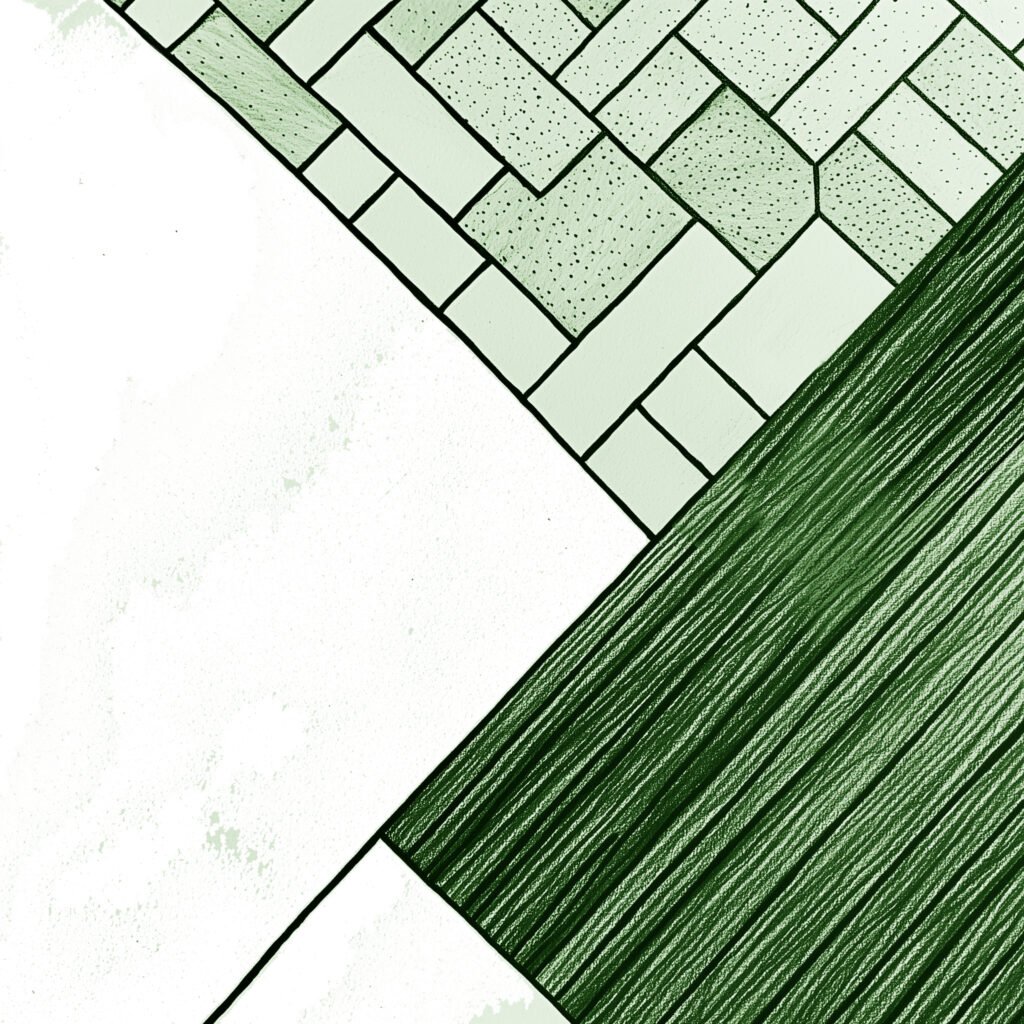
Paving in Combination: Where Materials Meet
Some of the most beautiful outdoor spaces happen where materials meet – where a porcelain terrace transitions into composite decking, or where a natural stone path slices through lawn.
We often:
- Use timber or corten edging to break up hard surfaces
- Combine porcelain with gravel for contrast and drainage
- Add stepping stones through planting to soften long walks
- Create zones: dining, lounging, paths, utility
Good design isn’t about choosing just one material. It’s about choosing the right material for each moment – and making sure they all speak the same language.
What Not to Do When Choosing Paving – 5 Mistakes We’ve Seen (and Helped Fix)
A funny-but-true guide to avoidable paving fails – and how to get it right from the start
We get called in for all sorts of projects – sometimes to build from scratch, other times to rescue a situation gone sideways. These are five real mistakes we’ve seen (not ours!) that still make us chuckle… and keep us booked.
1. Going with the Cheapest Option… and Paying Twice
“It looked like a bargain… until the dog started refusing to walk on it.”
One client asked us to take a look at his garden after some “budget paving” had aged very badly. The slabs were cracked, uneven, and permanently damp.
He greeted us with:
“I think I made a very affordable mistake.”
What we did: removed the old concrete, fixed drainage, and installed a porcelain patio that actually worked for the space.
Takeaway: Cheap materials usually come with hidden costs – and most of them show up after the first Irish winter.
2. Choosing a Slab Based on a Dry Sample
“We thought it was grey. Turns out it’s ‘damp dolphin’.”
We visited a garden where the owners were disappointed that their gorgeous light-grey limestone had turned a blotchy greenish-blue.
They’d fallen in love with a showroom sample… and hadn’t seen it wet.
Our tip: Always ask to see a wet sample or visit a local project with the same stone. Rain changes everything – especially in Ireland.
3. Picking Smooth Tiles for a Sloped Garden Path
“It looked sleek – until we slid down it with coffee in hand.”
A family invited us out to consult after their newly paved path turned into a skating rink. The ultra-smooth porcelain they’d picked had zero grip.
We helped them retrofit with a more textured finish – still modern, but way safer.
Moral: Aesthetic is great. So is friction.
4. Ignoring Drainage Completely
“After it rained, the garden turned into a reflecting pool. Just… not on purpose.”
We were brought in to fix a patio that had zero slope. The paving looked great, but water had nowhere to go – except into puddles across the whole surface.
We re-laid the area with proper levels, installed subtle drainage, and gave the water a new place to be.
Reminder: Flat paving = flooded paving. Even a few mm of slope can save you headaches.
5. Going for a Modern Statement… with the Wrong Materials
“We wanted sleek geometry. We got soggy splinters.”
A couple called us after their modern-style courtyard started to fall apart. The layout was great – porcelain pavers in a clean grid, intersected by timber strips for contrast. On paper, beautiful. In real life? Less so.
The timber they used was a standard commercial product, not properly treated for moisture or outdoor use. After the first Irish winter, the wood had warped, cracked, and started growing things it shouldn’t. What was meant to be a sharp, minimalist look had turned patchy, uneven, and – in some corners – puddled.
What we did: We replaced the timber accents with properly sealed, moisture-resistant hardwood (the kind we use in decking subframes – more in our article about structural systems), and redesigned the drainage.
Lesson: The clean lines of modern design rely on the right materials – ones that don’t just look good on day one, but hold up gracefully to the seasons ahead.

FAQs Top Questions and Answers About Paving
Q: What’s the most low-maintenance paving material?
A: Porcelain is usually the easiest to maintain. It’s non-porous, resists stains and algae, and only needs basic washing – no sealing or heavy upkeep required.
Q: Can I use different types of paving in one space?
A: Yes, and combining materials can really lift a design. Mixing stone, porcelain, and gravel can add texture, define different areas, and make the whole garden feel more natural and well-structured.
Q: Does paving need sealing?
A: Natural stone usually benefits from sealing to protect against staining and weathering. Porcelain doesn’t need sealing, while concrete pavers might need occasional treatment depending on usage and exposure.
Q: How long does paving last in Irish weather?
A: With proper installation and drainage, good paving can last 15–25 years. Materials like porcelain and quality stone hold up especially well in Ireland’s wet, variable climate.
Q: Can paving help with drainage issues?
A: Absolutely. Correct paving design — with slopes, permeable joints, or discreet drains — helps water flow away naturally, reducing the risk of puddles, erosion, and frost damage.
Ready to Design from the Ground Up?
If you’re planning an outdoor space, paving isn’t the end – it’s the foundation. Done well, it ties everything together. Done poorly, it creates problems you can’t ignore.
Let’s talk early, plan smart, and build something solid – and beautiful.
Timbermasters – Paving with purpose. Built to last. Designed for life.

